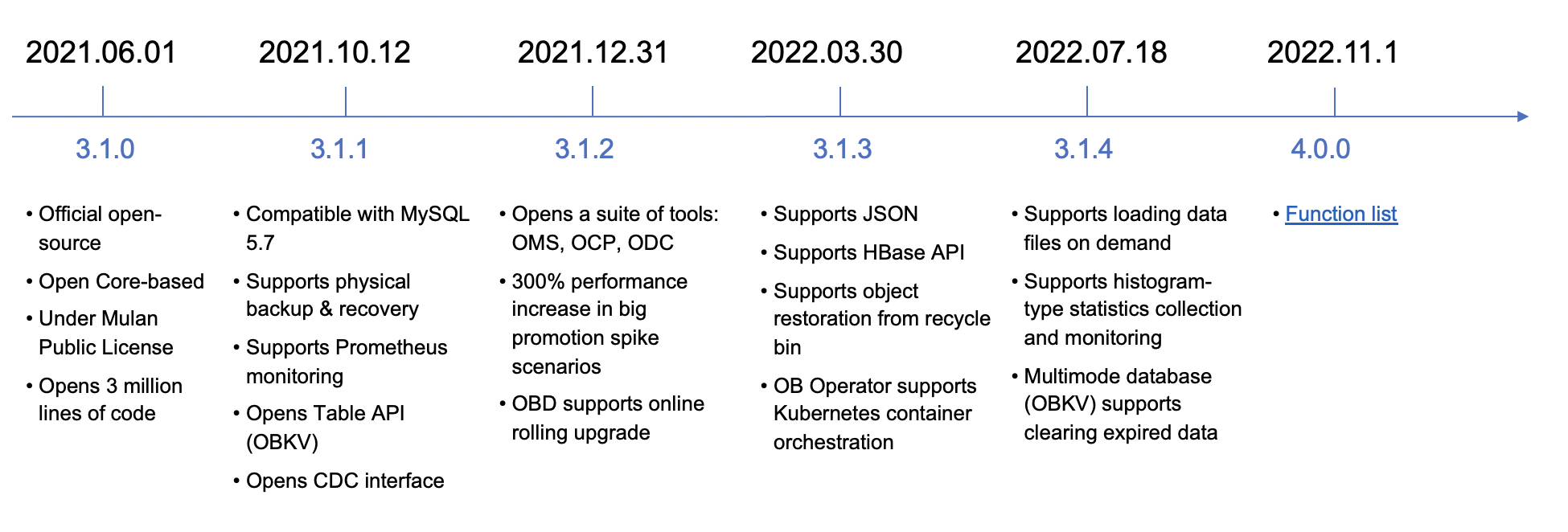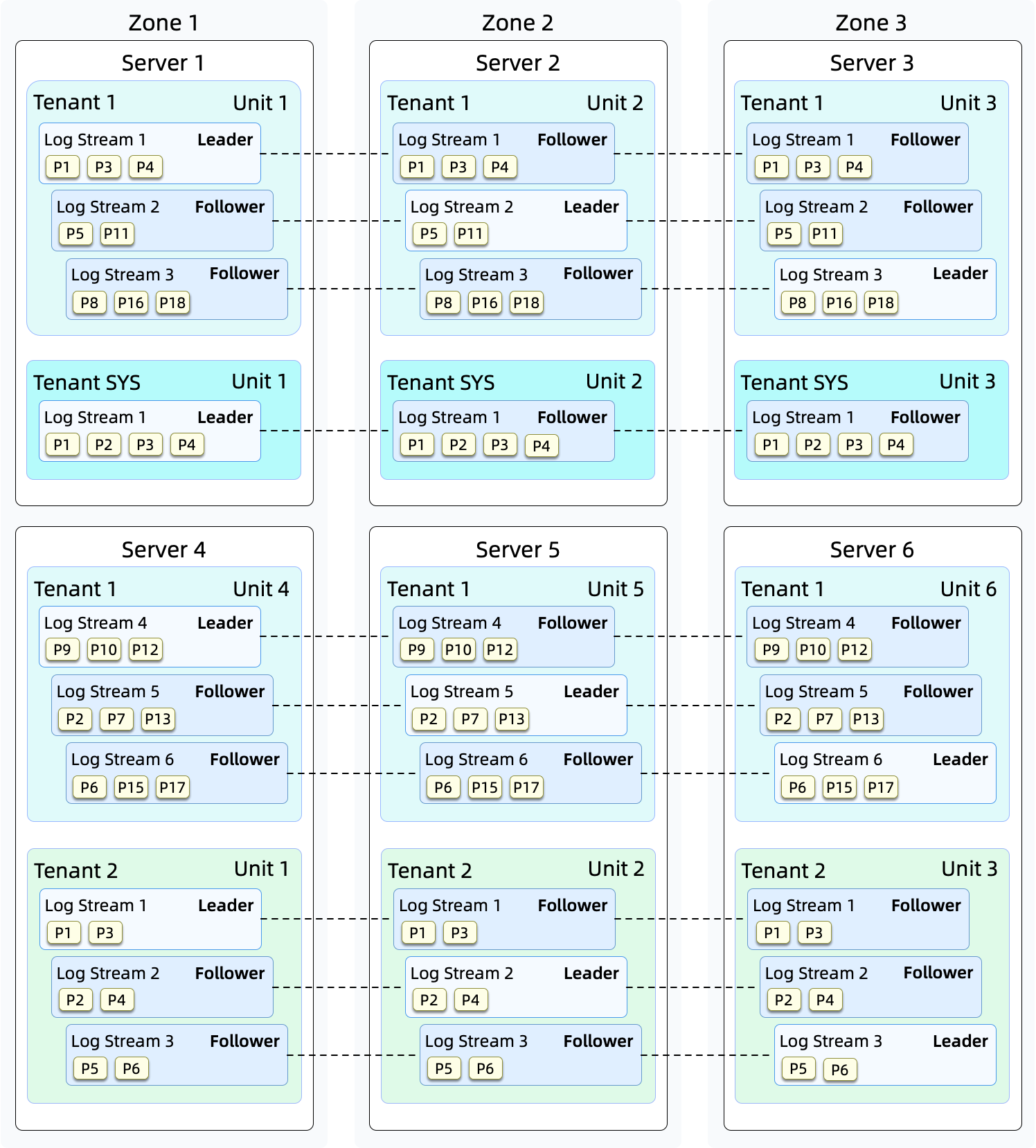OceanBase Database is a distributed relational database. It is developed entirely by Ant Group. OceanBase Database is built on a common server cluster. Based on the Paxos protocol and its distributed structure, OceanBase Database provides high availability and linear scalability. OceanBase Database is not dependent on specific hardware architectures.
Key features
- Transparent Scalability
- Ultra-fast Performance
- Real-time Operational Analytics
- Continuous Availability
- MySQL Compatible
- Cost Effeciency
See key features to learn more details.
System architecture
The operation of an OceanBase Database is supported by different components in the storage, replication, transaction, SQL, and access layers:
- Storage layer: Stores the data of a table or a table partition.
- Replication layer: Ensures data consistency between replicas of a partition based on consensus algorithms.
- Transaction layer: Ensures the atomicity and isolation of the modifications to one or multiple partitions.
- SQL layer: Translates SQL queries into executions over the storage.
- Access layer: Forwards user queries to the appropriate OceanBase Database instances for processing.
Quick start
How to deploy
🔥 Deploy by all-in-one
You can quickly deploy a standalone OceanBase Database to experience with the following commands.
# download and install all-in-one package (internet connection is required)
$> bash -c "$(curl -s https://obbusiness-private.oss-cn-shanghai.aliyuncs.com/download-center/opensource/oceanbase-all-in-one/installer.sh)"
$> source ~/.oceanbase-all-in-one/bin/env.sh
# quickly deploy OceanBase database
$> obd demo
🐳 Deploy by docker
- Pull OceanBase image (optional)
$> docker pull oceanbase/oceanbase-ce
- Start an OceanBase Database instance
# Deploy an instance with the maximum specifications supported by the container.
$> docker run -p 2881:2881 --name obstandalone -e MINI_MODE=0 -d oceanbase/oceanbase-ce
# Or deploy a mini standalone instance.
$> docker run -p 2881:2881 --name obstandalone -e MINI_MODE=1 -d oceanbase/oceanbase-ce
- Connect to the OceanBase Database instance
$> docker exec -it obstandalone ob-mysql sys # Connect to the root user of the sys tenant.
$> docker exec -it obstandalone ob-mysql root # Connect to the root user of the test tenant.
$> docker exec -it obstandalone ob-mysql test # Connect to the test user of the test tenant.
See also Quick experience or Quick Start (Simplified Chinese) for more details.
How to build
See OceanBase Developer Document to learn how to compile and deploy a munually compiled observer.
Roadmap
See OceanBase Roadmap.

Case study
See success stories.
Contributing
Contributions are highly appreciated. Read the Contribute to OceanBase guide to getting started.
License
OceanBase Database is licensed under the Mulan Public License, Version 2. See the LICENSE file for more info.
Community
Join the OceanBase community via:
- Slack Workspace
- Chinese User Forum
- DingTalk Group: 33254054 (QR code)
- WeChat Group (Add the assistant with WeChat ID: OBCE666)









